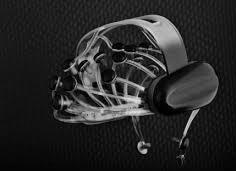Brain the most vital and delicate part of our body. Every single action we do is operated by brain. We have a conscious and unconscious mind. Conscious mid is when we do something of which we are aware. And unconscious mind is when we perform any action randomly which happen automatically include thought processes, affect. Preconscious mind is part of mind which signifies ordinary memory. Whilst we are not intentionally aware of information at any given time, we can get back it and pull it into consciousness when required.
Brain is electrical anytime electron is speed up, it provides electromagnetic radiation. Same holds true for electrons vacillating inside brain. Humans naturally release radio waves. These signals are too weak to be sensed by others, and even if we could observe these radio waves, it would be hard for us to observe them. However computers are altering all this. Scientists have previously been able to get basic estimation of person's thoughts by using EEG scans. Person put on helmet of EEG sensors on their head, and concentrates on definite pictures, like, image of car or a house. EEG signals were recorded for every image and ultimately, elementary dictionary of thought was produced, with one-to-one connection between the EEG image and person's thoughts. Computer would distinguish this EEG pattern when person was shown picture of another car.

Benefit of EEG sensors is that they are non- invasive and rapid. You just put a helmet comprising many electrodes on top of the surface of brain and EEG can quickly recognize signals that alter every millisecond. But difficulty with EEG sensors is that electromagnetic waves decline as they pass through skull, and it is hard to position precise source. This process can tell if you are thinking of car versus house, but it can’t recreate image of car.
The epicentre of this research is the University of California at Berkeley. In this there was a team of young, keen graduate students grouped to research on it.
In this method of making paralyzed people active is: Initially person lies flat on stretcher that is gradually inserted head first into enormous, MRI machine costing upwards of $3 million. He/she is then shown many movie clips. To build up sufficient data, you have to sit stationary for hours examining these clips, truly hard task.
As person sees movies, MRI machine produces a 3D image of blood flow in the brain. MRI image looks like huge collection of 30,000 dots or voxels. Every voxel signify a pinpoint of neural energy and colour of dot matches to intensity of signal and blood flow. Red dots signify points of large neural activity, whereas blue dots signify points of less activity. The last image seems very much like thousands of lights in shape of brain. Directly, you can see brain is concentrating most of its mental energy in visual cortex whereas watching these videos.
At first, this colour 3D collection of dots looks like rubbish. But after years of research, there is a mathematical formula that begins to create connections between certain features of picture (edges, textures, intensity, etc.) and MRI voxels. For instance, if you look at boundary, you will notice it is a region separating lighter and darker areas and therefore edge produces definite pattern of voxels. When so many persons watches such a large library of movie clips, this mathematical formula is refined, permitting computer to analyze how all kinds of images are converted into MRI voxels. Ultimately, scientists were able to determine direct correlation between definite MRI patterns of voxels and each picture. "We made model for each voxel which describe how space and motion information in movie is mapped into brain activity,"
We can take consciousness of someone who is completely paralyzed, can’t do anything with their body, after putting a chip in their brain, that person can control a laptop. They can now surf Web, write emails, control their wheelchair, reply emails, control household appliances, and even influence mechanical arms.
Like theoretical physicist, cosmologist Stephen Hawking, is completely paralyzed, and he has a chip in his right glass. brain sensor that picks up radio from his brain and permits him to type mentally.